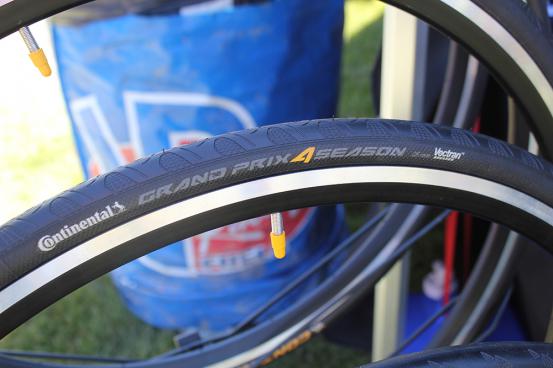- Commissioner’s statement on Ventura, Marte
- Ronnie O’Sullivan: Masters champion ‘felt so vulnerable’ in final
- Arron Fletcher Wins 2017 WSOP International Circuit Marrakech Main Event ($140,224)
- Smith challenges Warner to go big in India
- Moncada No. 1 on MLB Pipeline’s Top 10 2B Prospects list
- Braves land 2 on MLB Pipeline’s Top 10 2B Prospects list
- Kingery makes MLB Pipeline’s Top 10 2B Prospects list
- New Zealand wrap up 2-0 after Bangladesh implosion
- Mathews, Pradeep, Gunathilaka to return to Sri Lanka
- Elliott hopes for rain for Poli
Technical FAQ: Why are labeled tire sizes inconsistent?
- Updated: May 17, 2016

Dear Lennard, I’d like to get your take (and hopefully that of an industry spokesman) on tire sizing. While it’s widely recognized that the relationship between labeled tire width and measured width has wide variation for a given wheel (much less over differing rim widths), I’ve not seen anything that discussed difference in tire height (rim edge to top of tire). With the trend in increased tire size coupled with frame constraints, identifying tires that will fit my frame is an increasing challenge. Case in point: I have been riding Continental Gatorskin 700×28’s on my Mavic 622x15c wheels, with adequate clearance at the chain stay and the seat stay cross brace. I recently upgraded to a Mavic 622x17c rim and moved to a 700×28 Conti Grand Prix 4000 S II. When mounting wheel on the frame, the chain stay clearance looked ok, but when I rolled the bike away from the stand, the rear wheel was locked-up. Lo and behold, the tire was hard up against the cross brace. Fortunately, I had a new pair of Gatorskins in 700×28, so I swapped tires. The Gatorskins cleared, with an estimated difference to be 4-5mm between the two “heights.”
Long story short, what is the best way to determine tire size suitability when evaluating tires given challenging clearance? I’ve looked at measuring the tire width when laid flat and found tires with smaller advertised widths having a larger overall bead-to bead width when compared to a larger diameter tire (from the same vendor).— Robert
Dear Robert, I passed your question on to a number of tire manufacturers, many of whom replied, and their answers are below. While outer diameter is never specified, even the tire width imprinted on the side of the tire is not required to be accurate, since there is little standardization of bicycle-tire dimensions. Specs are largely up to the tire manufacturer, and I know that when I started going to bicycle-tire factories over 20 years ago, I was shocked to learn that a spec of +/- 4mm from the imprinted width for the measured width was not out of the ordinary.— Lennard
From Continental: There are a number of variables, which affect not only height and width, but even shape: rim width, tire pressure, even the thickness of the rim tape can play a role. Although the ETRTO (European Tire Rim Technical Organization) endeavors to provide standards around tire and rim specifications, “height” is an element that is not specifically defined. The sizing printed on the tire refers to diameter and width expressed in millimeters i.e. 23-622 represents what we all commonly know as 700x23C. Continental does however call out circumference measurements on our packaging to make calibrating non-GPS enabled cyclometers easier, but does not make reference to actual height.
As to production width tolerance for road tires, we are generally -0/+2mm. This tolerance can vary slightly more when considering larger volume models such as MTB tires. Unbeknownst to most, tires do also ‘grow’ with inflation and use.
— Brett Hahn North American brand manager, Continental Bicycle Tires
From Specialized: This is an interesting question indeed and one that is discussed between frame designers and tire team at Specialized all the time. I guess at Specialized we have the advantage that we can have this discussion and design frames, wheels, and tires in conjunction. Cooperative design becomes increasingly important as tire and rim sizes scale much more than in the past. We go as far as designing frames around tires (Tarmac, Roubaix, all 6 Fattie MTN) or vice-versa (S-Works Turbo 22mm front for the Venge, Roubaix Pro 30/32 for the Diverge). …
continue reading in source velonews.competitor.com
